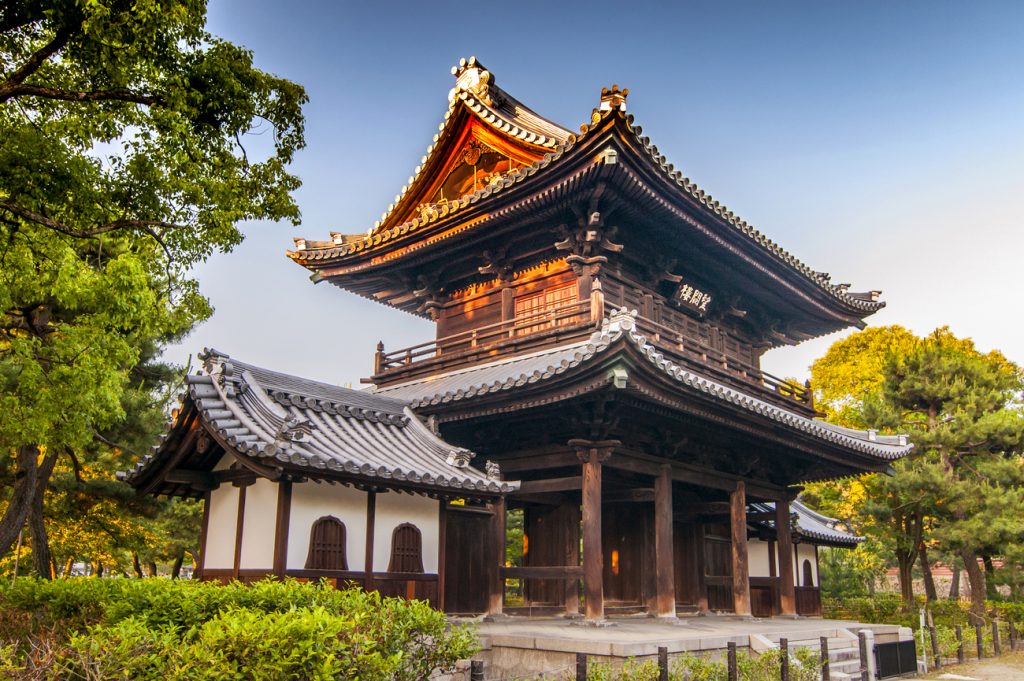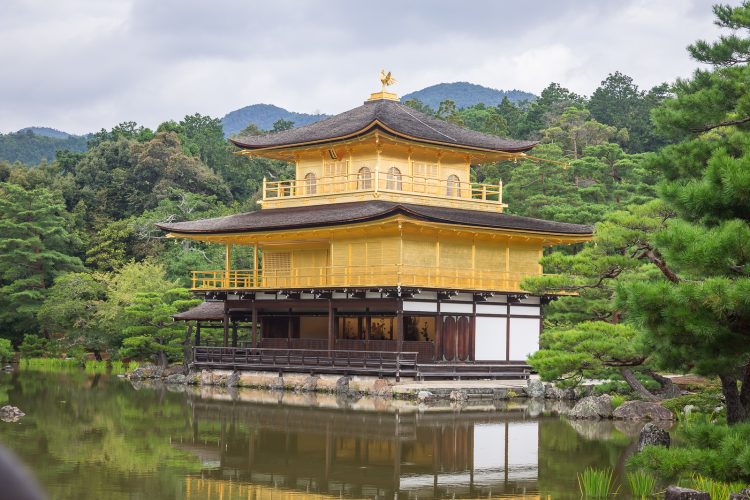Introduction: The Timeless Allure of Kyoto
When one thinks of Japan, Kyoto immediately comes to mind as the cultural heart of the nation. Steeped in history, tradition, and serene beauty, the city offers travelers an authentic glimpse into Japan’s past. With over a thousand temples, exquisite gardens, tea houses, and rich cultural practices that have remained unchanged for centuries, Kyoto is a must-visit destination for anyone looking to experience the true spirit of Japan.
For first-time visitors or seasoned travelers, Kyoto can feel like stepping into another world. It’s a place where ancient rituals like tea ceremonies are still practiced, where the cherry blossoms and maple trees frame your walks, and where every temple has a story to tell. As a frequent visitor to Japan, I’ve had the privilege of exploring Kyoto’s most famous attractions and also stumbling upon lesser-known gems that capture the essence of the city in more tranquil settings.
This guide aims to help you navigate Kyoto in 2024—whether you’re visiting for the first time or returning for another exploration of the city’s many facets. From must-see attractions to hidden treasures, practical travel tips, and what to pack, this guide will ensure that your Kyoto journey is as smooth and enriching as possible.
Kyoto’s Must-See Attractions: Temples, Tea Ceremonies, and Gardens
Kyoto is home to some of Japan’s most iconic cultural sites. While the city is steeped in history, its temples, gardens, and traditional tea ceremonies are the elements that really set Kyoto apart from other Japanese cities. Here are the top attractions that you absolutely cannot miss during your visit.
1. Kinkaku-ji (Golden Pavilion)
Perhaps the most famous of Kyoto’s temples, Kinkaku-ji, or the Golden Pavilion, is a UNESCO World Heritage site known for its stunning architecture and beautiful surroundings. The temple’s golden exterior gleams against the backdrop of a tranquil pond and lush gardens, making it one of the most photographed landmarks in Kyoto. Visitors can stroll along the well-maintained paths and take in the serene beauty of the temple and its reflection in the water.
Tip: Early morning or late afternoon visits offer a quieter experience with better lighting for photos.
2. Fushimi Inari Taisha
Famous for its iconic red torii gates, Fushimi Inari Taisha is one of the most visited Shinto shrines in Kyoto. The thousands of vermilion gates wind up Mount Inari, creating a surreal and unforgettable walking experience. While the full hike to the summit takes about 2-3 hours, visitors can choose to explore as much or as little of the trail as they like.
Tip: Plan to visit early in the morning to avoid the crowds and experience the mystical atmosphere of the torii gates.
3. Kiyomizu-dera
Another UNESCO World Heritage site, Kiyomizu-dera is famous for its massive wooden stage that extends over the hillside, offering panoramic views of Kyoto. The temple, dedicated to Kannon, the goddess of mercy, is particularly beautiful during the cherry blossom season when the surrounding trees bloom in vibrant shades of pink. Visitors can also enjoy the nearby Otowa Waterfall and Jishu Shrine, which is dedicated to love and matchmaking.
Tip: Don’t miss the chance to try the “love stones” at Jishu Shrine—walking between them with your eyes closed is said to bring good fortune in love.
4. Tea Ceremonies: Experience Japanese Tradition
No trip to Kyoto is complete without partaking in a traditional Japanese tea ceremony. Kyoto, with its rich tea culture, is home to some of the best tea houses offering immersive tea ceremony experiences. Whether you’re in the historic Gion district or the tranquil setting of Uji, the city offers many opportunities to enjoy a ceremonial cup of matcha prepared by skilled tea masters. The ceremony is not just about the tea, but the art of mindfulness and the respect for nature, making it a unique and tranquil experience.
Tip: Many tea houses in Gion and the surrounding areas offer short tea ceremonies, but booking in advance is essential, especially during peak seasons.
5. Arashiyama Bamboo Grove
Located in the Arashiyama district on the outskirts of Kyoto, the Bamboo Grove is an enchanting forest of towering bamboo stalks that creates an otherworldly atmosphere. The towering bamboo, combined with the sound of the wind rustling through the stalks, makes walking through the grove a peaceful, almost meditative experience. You can also visit the nearby Tenryu-ji Temple, a UNESCO World Heritage site, and Iwatayama Monkey Park for additional activities.
Tip: Visit early in the morning for a quieter experience before the crowds arrive.
Travel Tips: Navigating Kyoto’s Public Transportation, Best Times to Visit, and Local Etiquette
While Kyoto is a city rich in history and beauty, understanding how to navigate its transportation system, knowing when to visit, and respecting local customs can significantly enhance your travel experience.
Navigating Kyoto’s Public Transportation
Kyoto’s public transportation system is well-connected and easy to navigate. The Kyoto City Bus and Kyoto Subway are the primary modes of transport for tourists. The bus system is convenient, with many routes leading to popular attractions, and it’s often the best way to get to temples and gardens that aren’t directly accessible via subway.
- Kyoto Travel Pass: A one- or two-day travel pass can be a good option if you plan to use public transport extensively.
- Bicycles: Kyoto is a bike-friendly city, and renting a bicycle is a great way to explore at your own pace, especially in areas like the Philosopher’s Path and Arashiyama.
Tip: The city also has a bicycle-sharing program that is very affordable and convenient for short trips.
Best Times to Visit Kyoto
The best times to visit Kyoto are during the spring (March to May) and autumn (September to November) when the weather is mild and the natural surroundings are at their most beautiful. Spring offers the chance to witness the famous cherry blossoms, while autumn showcases the vibrant red, orange, and yellow foliage in Kyoto’s gardens and temples.
However, these seasons are also peak tourist times, so expect larger crowds. The winter months (December to February) are a quieter time to visit, though temperatures can dip, and some attractions may close early. Summer (June to August) is also the off-season, with heat and humidity, but it can be a good time to find fewer tourists.
Tip: Visiting during the weekdays rather than weekends can help avoid the crowds.
Local Etiquette and Customs
Kyoto, like the rest of Japan, has a rich culture rooted in respect and mindfulness. As a visitor, understanding local etiquette can make your experience smoother and more respectful.
- Shoes Off Indoors: In temples, tea houses, and some homes, you will be required to remove your shoes before entering.
- Quiet Behavior: Japanese culture places a high value on silence in public spaces. Keep conversations quiet and respectful in public transportation, temples, and restaurants.
- Respect Sacred Sites: When visiting temples and shrines, be mindful of your behavior. Avoid speaking loudly or taking photos in restricted areas.
Tip: Always bow slightly when entering or leaving a temple as a sign of respect.

Hidden Gems: Off-the-Beaten-Path Temples and Gardens for a Peaceful Experience
While Kyoto’s major temples and attractions are a must-see, there are many lesser-known spots that offer a more tranquil and reflective experience.
1. Tofuku-ji Temple
While it’s one of the larger temples in Kyoto, Tofuku-ji is often overlooked by tourists. The temple is known for its stunning autumn foliage and its serene Zen gardens. The Hojo Garden here, designed by the famous landscape architect Shigemori Mirei, is a peaceful place to relax and reflect.
Tip: Tofuku-ji is especially beautiful in autumn, but it’s less crowded than other major temples.
2. Nanzen-ji Temple
Located at the base of the Higashiyama mountains, Nanzen-ji is one of Kyoto’s most tranquil Zen temples. The expansive grounds include beautiful gardens, an ancient aqueduct, and a scenic walking path. Unlike the more crowded temples, Nanzen-ji offers a quiet, reflective atmosphere.
3. Kōbō San-ji (Kōbō-ji Temple)
Hidden in the northern hills of Kyoto, Kōbō San-ji is a small and peaceful temple that few tourists visit. It’s a wonderful place to escape the crowds and meditate amidst ancient trees and traditional gardens.
What to Pack and How to Dress When Visiting Traditional Cultural Sites
Kyoto’s traditional cultural sites require visitors to dress modestly and respectfully. When planning your wardrobe, here are a few tips:
- Comfortable Shoes: You’ll be doing a lot of walking, so comfortable shoes are essential. Opt for closed-toe shoes that are easy to remove for temple visits.
- Modest Clothing: When visiting temples, it’s best to wear clothes that cover your shoulders and knees. If visiting a shrine, try to avoid wearing overly casual attire like tank tops or shorts.
- Umbrella or Hat: Kyoto can be hot in the summer and rainy in the spring and autumn, so be prepared for the weather.
- Layered Clothing: The weather can change rapidly, so dressing in layers is a smart choice.
Recommended Itinerary for a 3
-Day Visit to Kyoto
If you have three days to explore Kyoto, here’s a suggested itinerary:
Day 1: Iconic Kyoto
- Morning: Visit Kinkaku-ji (Golden Pavilion) and the nearby Ryoan-ji (Rock Garden).
- Afternoon: Explore Nijo Castle and stroll through the Gion district.
- Evening: Experience a tea ceremony in Gion or Pontocho.
Day 2: Nature and Temples
- Morning: Early visit to Fushimi Inari Taisha and the Tori gates.
- Afternoon: Head to Arashiyama to explore the Bamboo Grove and Tenryu-ji Temple.
- Evening: Enjoy a walk along the Philosopher’s Path.
Day 3: Hidden Gems and Relaxation
- Morning: Explore the serene Tofuku-ji and Nanzen-ji temples.
- Afternoon: Visit Kiyomizu-dera and walk through Higashiyama.
- Evening: Relax with a peaceful stroll in Maruyama Park.
Conclusion: Kyoto’s Timeless Beauty Awaits
Kyoto is a city where tradition and beauty come together to offer an unforgettable travel experience. Whether you’re exploring the iconic temples, partaking in a tea ceremony, or discovering hidden gems, Kyoto offers something for everyone. With this practical guide in hand, you’re ready to explore the best of Kyoto in 2024. Take your time, immerse yourself in the culture, and let Kyoto’s tranquil beauty leave a lasting impression.





















